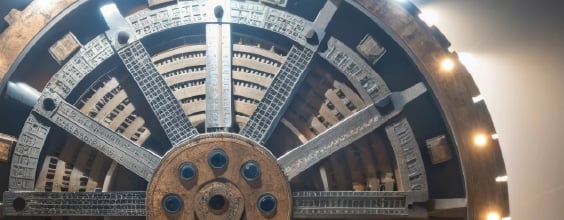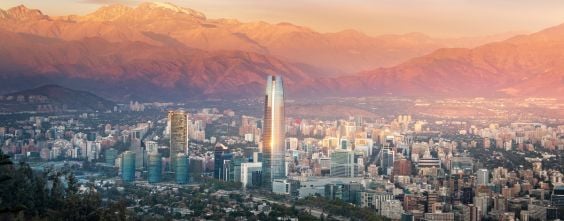DIMENSIONS OF COMPLEXITY
Urban Environment
Understanding the environment (location) in which the system will be installed and operate is a core principle for any successful project and key for understanding the most appropriate systems engineering approach. Urban environments are highly developed—houses, commercial buildings, roads and bridges support the large population density. Upgrading existing or creating new transport infrastructure is complex because of the need for that infrastructure to operate within and interact with this constrained built environment characterised by multiple structures and interacting elements and activities.
Open systems
As stated by INCOSE, a closed system is a system that is completely isolated from its environment whereas an open system is a system that has flows of information, energy, and/or matter between the system and its environment and adapts to the exchange. All physical systems of interest to systems engineering are open systems.
When it comes to interaction, the degree of openness drives the overall complexity of a transport system. All transport systems are open to an extent as they have a high level of interaction with other systems and users of the environment (e.g., passengers and operators). Open systems are more complex than closed systems because the interactions with these external elements cannot be fully controlled; therefore the system must be prepared to handle any number of possible interactions. For example, a bus rapid transit (BRT) system must share the road with other vehicles and users, and although they may have dedicated lanes, buses are still affected by the surrounding road traffic. This traffic impacts reliability and availability of the service in a way that is not fully within the operator’s control.
How open the system is depends on the level of control over the system boundaries. A bicycle hire scheme is one of the most open forms of urban transport. From pick-up to drop-off, anyone can use the bicycle in anyway and take it anywhere—this makes managing location, as well as the condition and availability of assets a complex problem. By comparison, an underground metro system is less open. Its interactions with outside users and systems are focused at specific locations—the stations—and the train actions and interactions along the route are almost wholly in control of the operator.
Making Positive Impact on the Built Environment
As well as generating a high level of interaction, urban transport systems will impact the environment in which they operate, both during construction and operation. Disruption to the surrounding built environment is inevitable. For example, light rail transit (LRT) tram systems often use existing roads along the desired route. When installing and constructing an LRT Tram system, sections of the road will need to be closed, existing utility pipes will require re-routing, and street furniture will have to be moved—all before beginning construction and installation of the LRT assets. Co-ordinated planning is needed to execute the works in a restricted time and space window. Once operational, the LRT will continue to impact its environment, affecting traffic flow and influencing the number of people in the area at any given time. As such, the introduction of urban transport systems can support the sustainability aspirations for the area.
Whilst the system provider has limited control over the environment, the positive impact on the environment can be significant. The role of the systems engineer is crucial in this process, to consider and understand all the factors and stakeholders and how they interact. A well-integrated transport system can reduce the use of cars, thus improving air quality, reducing congestion and enhancing transport access— benefits for residents and local business.
Stakeholders
In any transport and infrastructure project, there are sets of stakeholders, each of whom have their own drivers and needs. The government, local councils and other parties are interested in defining the capabilities and the impact on the area. They represent the users of the system and those who will be affected during construction and operation. They will often set requirements and constraints that the system needs to meet, including wider legislation including sustainability targets. Then there are parties that will interact with the system—for example, utility companies and other transport-infrastructure and supporting services. They will be keen to understand the interfaces with the system and may have requirements regarding their interactions. There are also regulatory bodies that ensure the standard of the system is acceptable and safe for use. Although this is a common list for any transport-infrastructure project, the number of individual stakeholders in these categories is often far greater when providing an urban transport system compared to similar infrastructure in other more sparsely populated environments. Managing the relationships and often conflicting goals of these stakeholders adds complexity.
System
The system itself creates a level of complexity. Operationally, an urban mass transport system has high capacity, limited downtime and often utilises partial or full automation. To achieve these aspects, the system design must utilise innovative methods and novel approaches to construct and operate a system for its specific urban environment. However, doing something for the first time or in a new way is hard to plan and challenging to execute, which adds complexity into the system and risk into the programme. Balancing the use of novel solutions and emerging technologies with established procedures and products is key to controlling innovation-driven complexity; often, urban environments require a high level of innovation to be viable. For example, an urban metro system commonly has large sections built on elevated viaducts (Dubai Metro), or underground (London Underground) as there is limited space on the surface. This requires sophisticated and innovative planning, design and construction and provides additional restrictions on operation and maintenance.
Mitigating Complexity
With the urban environment having such a large impact on complexity, it is important to understand how this constrains the delivery and operation of the system. When upgrading an existing metro system (Deep Tube Upgrade Programme for London Underground), the work can be delivered within the bounds and constraints of the existing system and largely within the operator’s control. In this case, the key impacts would be system closures, reduced operational capacity, restricted working times and the logistics of moving supplies in an underground environment. As discussed, constructing a tram system has different challenges due to the degree of impact on the existing infrastructure in the environment and with certain activities being outside the development rights and the control of the system implementer.
Systems engineering and integration can drive plans to mitigate this complexity. Systems integration can be tailored to the specific environmental and system challenges, which is particularly important for urban transport systems where the built environment is complex and may constrain the implementation options for the system; this complexity can be managed by understanding the system interactions, focusing on the core benefits, capturing the risks, assumptions and dependencies as well as managing stakeholder engagement and migration planning. These are all core parts of WSP’s systems engineering framework—SI:D3.
Applying a Systems Integration (SI) Framework
SI:D3 (WSP’s SI approach) provides a set of techniques and processes that can be tailored to the system and environment complexity. They shape a framework that enables the system engineer to work with organisations on core systems integration (SI) actions:
- develop a robust strategy,
- define and manage the design of the system and
- deliver an integrated solution.



















